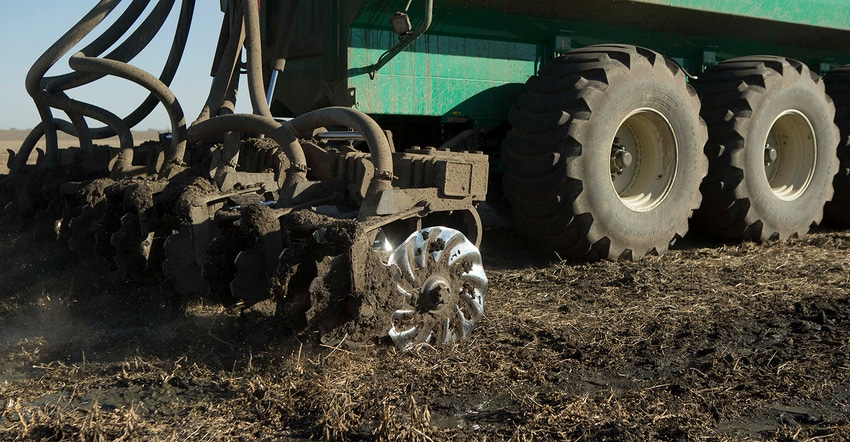UMN College of Veterinary Medicine researcher compares the adsorption of porcine reproductive and respiratory syndrome virus strains in Minnesota soils.

Porcine reproductive and respiratory syndrome virus continues to be one of the most economically challenging pathogens for U.S. pork producers, costing the industry more than $600 million annually. PRRS is just one of the pathogens the Morrison Swine Health Monitoring Project (MSHMP) continues to monitor for trends in incidence and prevalence, and one trend that has been on researchers' radar lately is the pathogen's increasing incidence in breeding farms between October and December.
Joaquin Alvarez-Norambuena, a graduate research assistant at the University of Minnesota College of Veterinary Medicine, says the timing is not surprising as that aligns with the time of the year when manure application is happening in the fields, and the PRRS virus can be found in pig feces and pig barn manure pits. However, we still do not understand the mechanism by which these two events are related.
He points to recent research led by previous MSHMP members Carles Vilalta and Julian Montoya Lopez, where the team found that under field conditions 9.1% of the manure pits were PCR positive for PRRS. Different questions arises including whether this virus and its different strains would have or not have the ability to leave the pit and maintain its viability during pit pumping and once it was spread on the soil.
Could different strains of the PRRS virus also percolate and remain viable in our soils? That was the question Alvarez-Norambuena set out to answer in a recent study he conducted and presented on during the North American PRRS Symposium in Chicago. It was a research area he recognized early on that would be challenging to study.
"Minnesota has 500 different types of soil, so actually getting into real conclusions, it's pretty hard because of that and in Minnesota we have a lot of swine farms so that also made this a challenge," he says.
Thirteen different types of soils, six from crop fields near Minnesota swine farms and seven provided by the UMN Agronomy Department, were chosen for the study and compared at 5-gram, 10-gram and 20-gram levels. Three PRRS virus strains, representative of recent major outbreaks, were selected: 1-7-4, 1-4-4 and 1-26-2.
To test percolation, the team used a 50-milliliter serological pipette, 0.8 inches wide and 10 inches long, and cut the top off to put a filter paper in the lower end, with soil, water and virus in it, and then injected the solution into the 5-gram, 10-gram and 20-gram samples.
Alvarez-Norambuena says because they were trying to mimic what is actually going on in field, air bubbles were removed, soil was moistened with just water, and a one to one volume between virus and water solution was created. As water went through the pipette, recovered solution was then titrated in Marc-145 cells.
For the 1-7-4, the initial titer was 6.5 logs in the 100 microliters, and it decreased in the dilution to 3.83. The virus was recovered in all 13 samples in the 5-gram measurement, 12 in the 10 grams and six in the 20 grams.
With 1-4-4 virus strain, the titer also decreased from 5.5 log in 100 microliters to 3.17 log. This virus was also recovered in all the 5-gram samples, but only six in the 10 grams and three in the 20 grams.
For the 1-26-2, the strain was recovered in all 13 samples in both 5 and 10 grams, and 10 in the 20-grams.
While all virus strains were able to percolate through all amounts and types of soil, Alvarez-Norambuena says there is an inversely proportional relationship between viral titer and amount of soil, and the soil physical characteristics affects the possibility of percolation.
"We are far away from understanding soil well … there might be factors that can help the virus to survive," he says. "PRRS does have the ability to percolate and remain viable, and strain does not seem to be a limiting factor."
He acknowledges that the soil characteristics that might affect virus viability and facilitate percolation are unknown however and further studies are needed to understand implication and dynamics of virus in soil.
"We don't know what the soil characteristics are. Is there pH and different acidities of the soil that also might vary between different moments of the year, like seasons?" Alvarez-Norambuena says. "We also need further studies to understand the implications of this, in the dynamics of the virus and how manure is spread and how this can actually link to what we got in farms, because water usually doesn't follow disinfection processes."
About the Author(s)
You May Also Like




